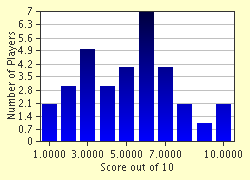Quiz Answer Key and Fun Facts
1. Claude was the second name of his hyphenated first name. What was his first name?
2. He started out drawing charcoal caricatures but who was the painter who introduced him to outdoor painting?
3. While in Paris in 1861, what event in April of that year abruptly ended his artist's way of life?
4. What was Monet's first successful painting to be accepted at the famous annual exhibition at the "Salon de Paris" in 1866?
5. In 1870 Monet fled to London. What was the reason for this unexpected departure?
6. Constant rejection by the "Salon de Paris" made life difficult for not only Monet but many of his fellow artists including Renoir, Pissarro, Sisley, Cézanne and Degas. They decided to stage their own exhibition in April 1874. What significant thing happened as a result of this exhibition?
7. In 1883 he came across a small village and rented two acres of land. What is the name of this village where he spent the rest of his life?
8. Which of the following painters was NOT a French "impressionist"?
9. After WWI, Monet contacted his old friend Georges Clemenceau (French Prime Minister) and donated his series of Water Lilies to France. In which museum are
they still on display?
10. In 1877 Monet painted a series of paintings at St-Lazare Station depicting smoke and steam and the effect they had on colour and visibility. He did a number of "series" paintings. Which "series" was exhibited first?
Source: Author
zambesi
This quiz was reviewed by FunTrivia editor
bloomsby before going online.
Any errors found in FunTrivia content are routinely corrected through our feedback system.

